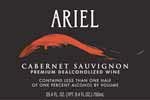Wine’s Partners in Good Health
Chocolate
American Journal of Clinical Nutrition (July 2008). The acute ingestion of both solid dark chocolate and liquid
cocoa improved vascular endothelial function and lowered blood pressure in overweight adults. Sugar content
may attenuate these effects and sugar-free preparations may augment them.
British Journal of Nutrition (July 2008). When an antioxidant removed from cocoa bean (Acticoa powder) was
given to rats for a year, they showed less age related brain deterioration. The results suggest that Acticoa
powder may be helpful in slowing age related brain impairments and perhaps even neurodegenerative
diseases. Further studies are planned to elucidate the mechanisms of cocoa polyphenols in neuroprotection
and explore their effects in humans.
Journal of Nutrition (October 2008). Dark chocolate taken in moderation (half a bar per week) supplies enough
antioxidant to reduce the risk of heart attacks. The research studied the amount of chocolate required to lower
C-reactive protein (CRP) levels in the blood which is a marker for coronary heart disease and inflammation.
Only dark chocolate was included in the study since it has the highest polyphenol levels among the forms of
chocolate (milk interferes with the body’s absorption of polyphenols). A J-shaped relationship between dark
chocolate consumption and serum CRP was observed. Consumers of up to 1 serving (20 g) of dark chocolate
every three days had serum CRP concentrations that were significantly lower than non consumers or high
consumers.
Green Tea
Journal of Nutrition (December 2008). This study evaluated the influence of a green tea catechin beverage on
body composition and fat distribution in overweight and obese adults during exercise induced weight loss. The
findings suggest that green tea catechin consumption enhances exercise induced changes in abdominal fat
and fasting serum triglycerides.
Journal of Nutrition (December 2008). There is some epidemiological and animal data that suggests that tea
and tea polyphenols may be preventive against various cancers, including breast cancer. This study evaluated
the relationship between green tea consumption and breast cancer risk. Compared with nondrinkers, regular
drinking of green tea was associated with a slightly decreased risk for breast cancer.
Alcohol-free Wine
Alcohol-free wine has fewer calories (19-36 calories per 4 ounce serving versus
90-125 calories for alcoholic wines). Alcohol-free wine is made by removing the
alcohol through a filter or vacuum process leaving by law less than one-half of one
percent alcohol. Ariel Vineyards, whose parent company is J. Lohr Vineyards &
Wines, has been making non alcoholic wines since 1985 and produces over
120,000 cases annually available in 22 countries. Alcohol-free wine is ideal for
pregnant women, dieters, designated drivers and people who must abstain for
health or religious reasons. These wines will not appeal to a drinker of traditional
wine since alcohol is critical to the roundness, richness and sweetness of wine. The
alcohol-free wines are closer in taste to White Zinfandel and slightly sweet sparkling wine.
Still another option for those who like wine, but don’t won’t to take risks during pregnancy, is the First Blush
juices which are 100% grape juice made with varietal grapes and 100% alcohol-free. Cabernet Sauvignon,
Merlot, Syrah and Chardonnay are available. Alas, no Pinot Noir.



